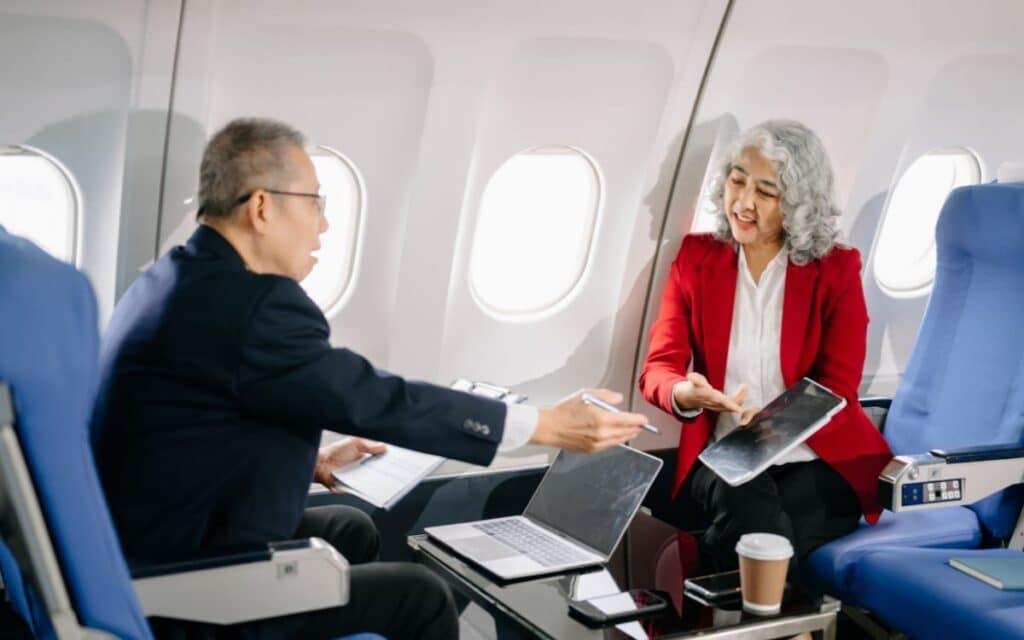5 Ways Aircraft Leasing Simplifies Fleet Management and Reduces Risk for Aircraft Operators
Managing an aircraft fleet ranks among the most capital-intensive and complex challenges in
transportation. Each aircraft represents not only a substantial financial investment but also an ongoing
commitment to maintenance, regulatory compliance, and long-term planning. In a market defined by
fluctuating demand and fast-paced technological advancement, operators face constant pressure to
balance efficiency with risk.
Against this backdrop, aircraft leasing has emerged as a vital strategy for operators worldwide, offering
access to essential assets without the full burden of ownership. This option continues to fundamentally
shape businesses’ decisions around fleet composition and long-term planning, as well as ordinary day-
to-day operations.
This article examines how leasing arrangements streamline fleet management and reduce risk for
aircraft operators in key operational areas.
Improved Cost Efficiency and Capital Allocation
Purchasing a single aircraft can require hundreds of millions of dollars in upfront investment. For many
operators, that level of capital outlay not only limits financial flexibility but also introduces long-term
exposure to asset depreciation. Leasing changes this dynamic by allowing companies to access the
aircraft they need without committing to long-term ownership costs.
Through leasing, operators can allocate funds more strategically, directing resources toward route
development, passenger services, or technology upgrades rather than tying up cash in depreciating
assets. This approach improves liquidity and cushions operators against sudden financial shocks. It also
reduces the need for extensive borrowing, which can carry its own risks during downturns.
By lowering the financial barrier to entry and easing the strain on balance sheets, leasing provides a
more sustainable path for managing fleets. This makes it easier for operators to focus on superior
service and route performance.
Access to Flexible Maintenance and Technical Support
Keeping aircraft airworthy involves constant inspections and scheduled servicing, in addition to
compliance with strict safety standards. For operators that own their fleets outright, these
responsibilities can require large in-house teams and significant infrastructure. Leasing, however, often
comes with built-in access to technical asset management and flexible, established maintenance
networks.
This arrangement lightens the burden on operators by outsourcing part of the maintenance process. It
also shortens downtime, since leased aircraft are typically supported by providers that can coordinate
repairs through global maintenance, repair, and overhaul (MRO) facilities. Having reliable technical
backup means fewer unexpected disruptions and a smoother flow of operations.
Rather than stretching internal teams thin, operators can concentrate on core activities like route
efficiency and customer service. Leasing, therefore, provides not just aircraft but the support systems
needed to keep them in the air safely and consistently, ultimately transferring much of the technical risk
back to the lessor.

Strategic Asset Planning and Fleet Renewal
Fleet composition is central to an operator’s long-term strategy. Choosing the right mix of aircraft
affects everything from route profitability to fuel efficiency. Leasing plays a critical role in this process by
giving operators access to a wide range of aircraft types without committing to permanent ownership.
Instead of shouldering the risks of permanent acquisitions, operators can rotate aircraft in line with
business objectives. Leasing makes it possible to introduce newer, more efficient models as they
become available or to source aircraft already modified through cabin reconfiguration or the highly
specialized process of passenger-to-freighter (P2F) conversion. More importantly, it also offers a lower-
risk way to test new routes and markets, since capacity can be added or withdrawn without major
capital outlay.
In practice, leasing transforms fleet renewal into an adaptable planning tool, helping operators balance
today’s operational requirements with tomorrow’s strategic goals.
Immediate Scalability and Demand Alignment
Air travel demand rarely stays static. Seasonal peaks, sudden drops in demand, and even shifting route
viability can create significant challenges for operators tied to a fixed fleet. Leasing helps overcome this
rigidity by offering the option to scale capacity up or down without long-term financial strain.
During busy holiday periods, for instance, airline companies can bring in additional narrow-body aircraft
to handle passenger surges. When demand softens, they can release aircraft at the end of operating
lease terms instead of carrying idle planes that drain resources. Leasing also enables operators to access
wide-body aircraft for international routes on shorter notice, ensuring that opportunities in emerging
markets can be pursued quickly.
Ultimately, leasing makes fleets more responsive to change, allowing operators to align supply with
demand in near real-time. This dynamic capability helps operators withstand market volatility instead of
being overwhelmed by it.
Lifecycle Risk Management
The financial value of an aircraft is rarely constant. Economic downturns and fluctuating fuel prices, in
addition technological breakthroughs, can drive resale values down sharply, creating significant financial
exposure for operators who own their fleets outright.
Instead of bearing this volatility, operators can leverage lease agreements to shift the residual value risk
entirely to the lessor. This is one of the most powerful risk-mitigation benefits of leasing: the operator
only pays for the asset’s use over a defined term, guaranteeing a zero exit price and eliminating the
massive financial burden of trying to sell a depreciating asset in an uncertain market.
Furthermore, the end of an aircraft’s service life with a particular operator presents its own logistical
challenges. The processes of remarketing, repossession, and eventual disposal require specialized
expertise that few airlines have, or want to develop, in-house. Lease structures simplify this transition by
making the lessor responsible for all end-of-life logistics and financial complications.
Unlike ownership that locks operators into long-term capital commitments and residual value risk,
leasing offers a dynamic counter-strategy. It lowers upfront costs, shifts technical risk, and streamlines
access to modern, scalable aircraft. More than just convenient, this adaptability is essential for
resilience. In volatile markets, leasing provides not only flexibility but strategic clarity: a smarter way to
plan, adapt, and compete.







